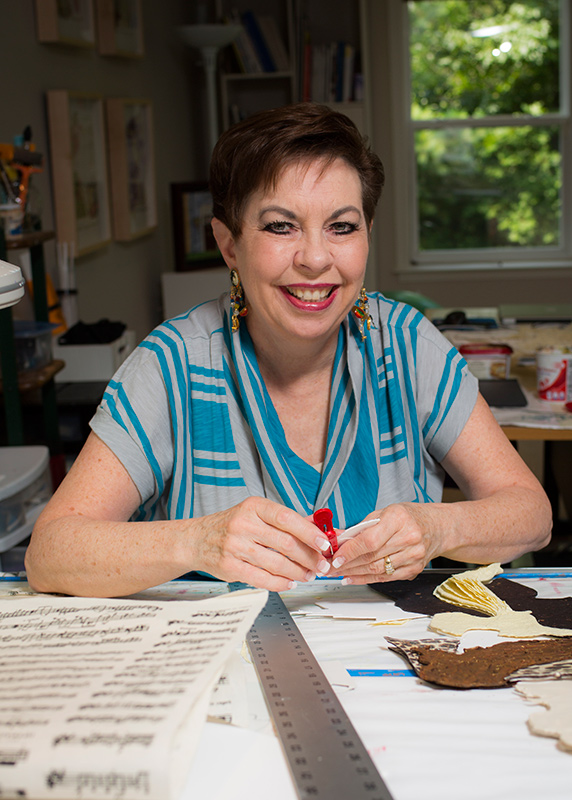Katharine Owens
While it may not be readily apparent, all of Katharine Owens work is created using paper with only the auxiliary use of acrylic and watercolor paint. Viewers are often surprised when told the work is completely composed of individual pieces of paper.
What sets Katharine’s construction collage apart from other works of art is the intricate detail and 3-D imagery in every piece. The more one looks at her art, the more one sees within the image. As viewers move beyond the initial impression of her artwork, examining it in more detail they are often exclaim, “Oh look at that, I did not see that when I first looked at the image”. Katharine strives to create art that communicates the intricacy, complexity and beauty of everyday objects that are normally overlooked. She believes there is great beauty in our everyday lives if we look beyond the looking and truly see what is before us.
Her collage artwork consists of creating various puzzle pieces, and then assembling them into an image that conveys depth and engages the viewer in discovery of intricate detail. Her artwork includes attention to not only the central image, but also the creative use of empty space and many overlays of paper and paint
When Dr. Katharine Owens began a career transition from psychologist to visual artist, she thought she was moving from one world into another, leaving psychology far behind her. It soon became clear to her that the life lessons so often addressed in psychotherapy were the very same lessons working in the creation of her art; lessons about fear and self-doubt.
She says creating art involves a dynamic dance between creativity and fear or doubt. One of the most powerful challenges for an artist is to recognize that fear drives creativity into full bloom and thus to welcome fear when it knocks at the door. An artist continually asks questions such as: Is my work good enough? Is it worth doing? Is it real art? Will others like it? Will it be accepted? Will it be understood? Will others approve? These are the very same questions many ask in their daily lives
She has often likened psychotherapy to looking at the jig saw puzzle pieces of a person’s life, rearranging the pieces in a different way, discarding others and creating new pieces, perhaps even placing a new piece on top of an old one, enabling a person to view their life in a new way, with greater depth and interest, seeing beauty and complexity in all the details of experience and personality. The creation of her artwork is much the same.

